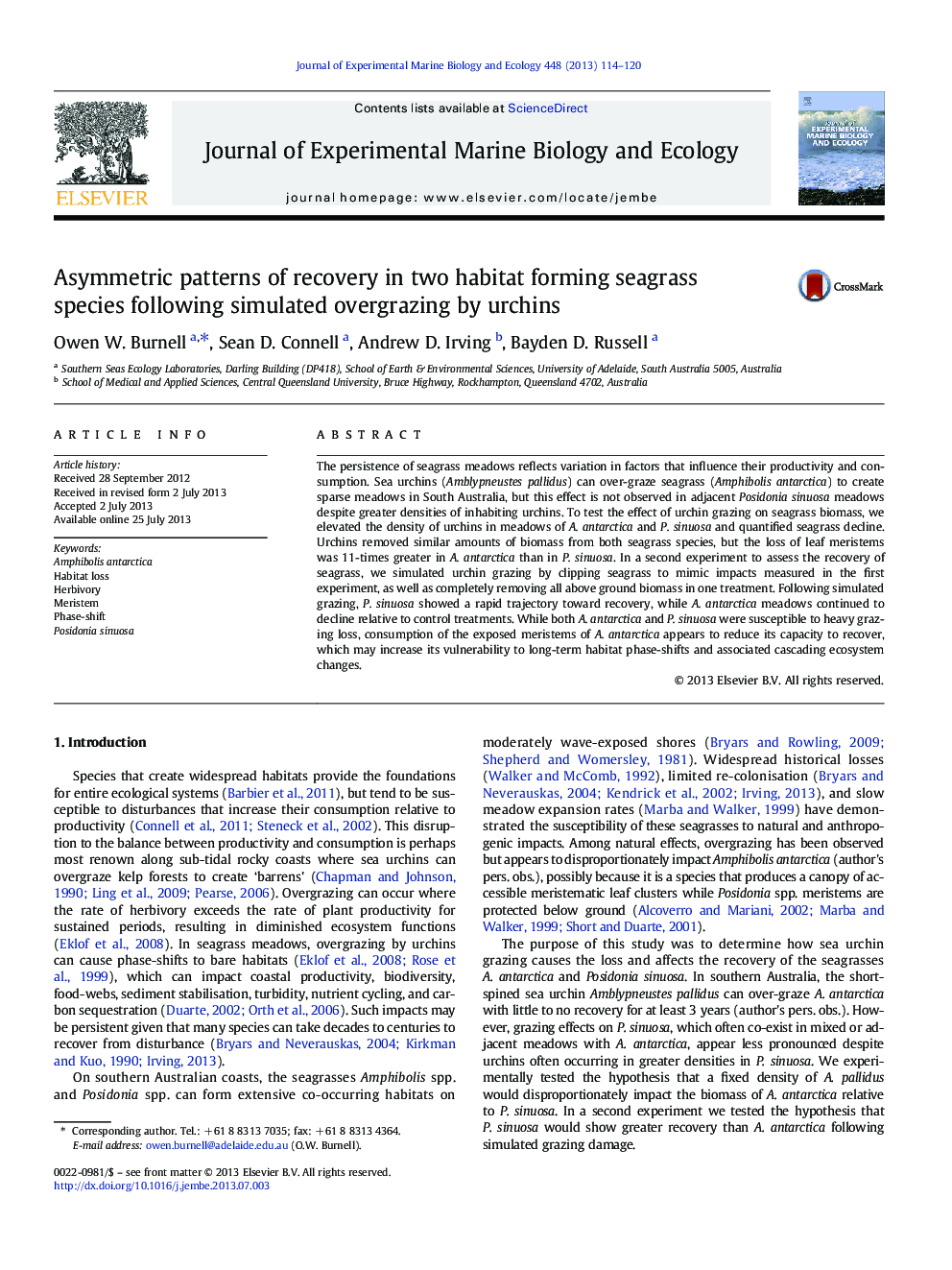| کد مقاله | کد نشریه | سال انتشار | مقاله انگلیسی | نسخه تمام متن |
|---|---|---|---|---|
| 6304357 | 1618427 | 2013 | 7 صفحه PDF | دانلود رایگان |
عنوان انگلیسی مقاله ISI
Asymmetric patterns of recovery in two habitat forming seagrass species following simulated overgrazing by urchins
ترجمه فارسی عنوان
الگوهای نامتقارن بهبودی در دو گونه زیستگاه که گونه های دریایی را تشکیل می دهند پس از جوجه گوشتی بیش از حد پرورش شبیه سازی شده است
دانلود مقاله + سفارش ترجمه
دانلود مقاله ISI انگلیسی
رایگان برای ایرانیان
کلمات کلیدی
موضوعات مرتبط
علوم زیستی و بیوفناوری
علوم کشاورزی و بیولوژیک
علوم آبزیان
چکیده انگلیسی
The persistence of seagrass meadows reflects variation in factors that influence their productivity and consumption. Sea urchins (Amblypneustes pallidus) can over-graze seagrass (Amphibolis antarctica) to create sparse meadows in South Australia, but this effect is not observed in adjacent Posidonia sinuosa meadows despite greater densities of inhabiting urchins. To test the effect of urchin grazing on seagrass biomass, we elevated the density of urchins in meadows of A. antarctica and P. sinuosa and quantified seagrass decline. Urchins removed similar amounts of biomass from both seagrass species, but the loss of leaf meristems was 11-times greater in A. antarctica than in P. sinuosa. In a second experiment to assess the recovery of seagrass, we simulated urchin grazing by clipping seagrass to mimic impacts measured in the first experiment, as well as completely removing all above ground biomass in one treatment. Following simulated grazing, P. sinuosa showed a rapid trajectory toward recovery, while A. antarctica meadows continued to decline relative to control treatments. While both A. antarctica and P. sinuosa were susceptible to heavy grazing loss, consumption of the exposed meristems of A. antarctica appears to reduce its capacity to recover, which may increase its vulnerability to long-term habitat phase-shifts and associated cascading ecosystem changes.
ناشر
Database: Elsevier - ScienceDirect (ساینس دایرکت)
Journal: Journal of Experimental Marine Biology and Ecology - Volume 448, October 2013, Pages 114-120
Journal: Journal of Experimental Marine Biology and Ecology - Volume 448, October 2013, Pages 114-120
نویسندگان
Owen W. Burnell, Sean D. Connell, Andrew D. Irving, Bayden D. Russell,
